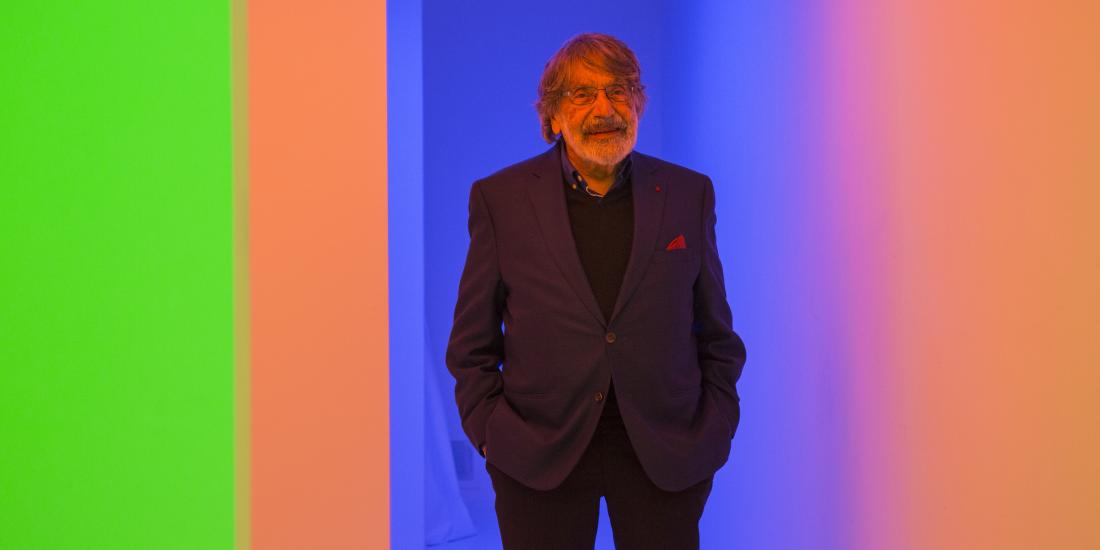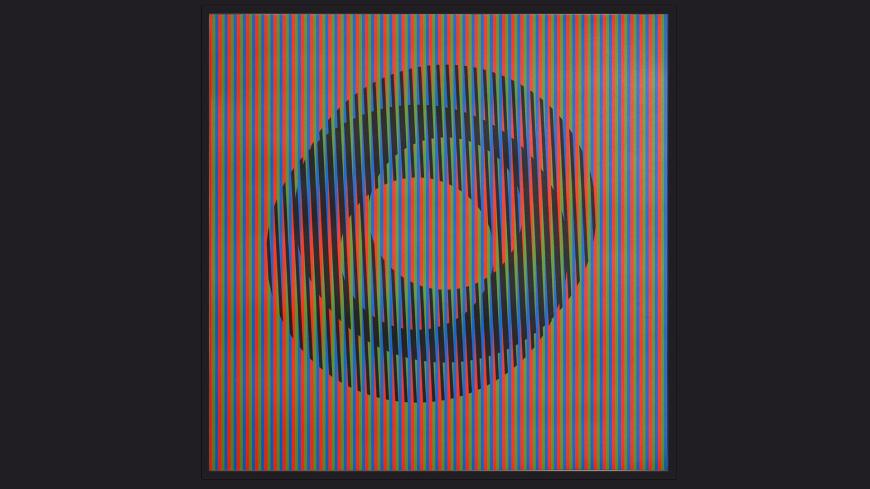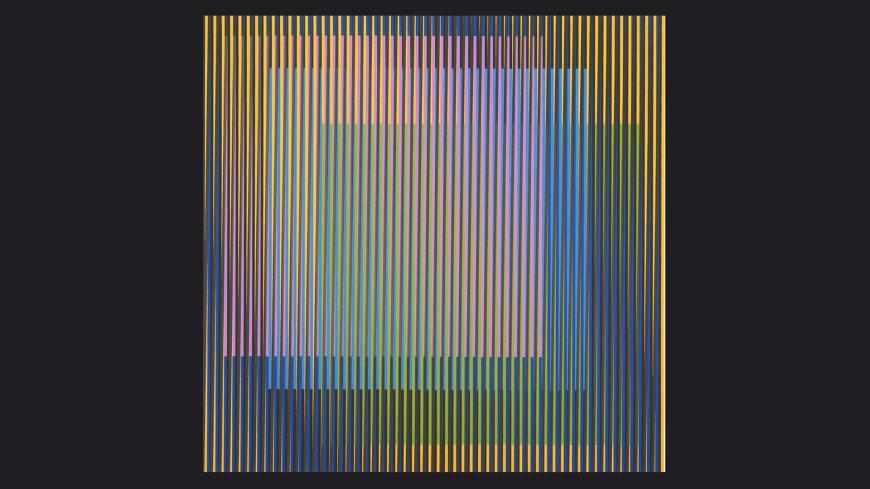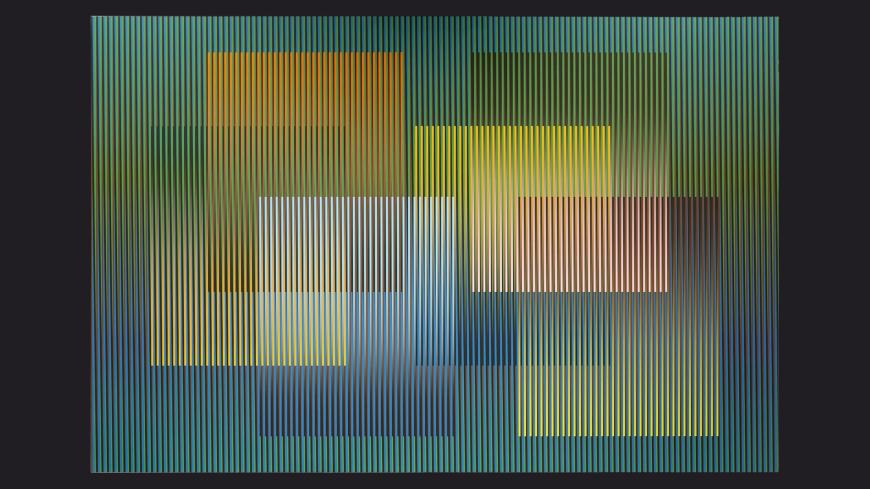The early days
Carlos Cruz-Diez (1923-2019) began his career in the 1940s in Caracas, Venezuela. His initially figurative work soon moved towards a more abstract visual language, in keeping with the artistic movements of the day. He soon discovered new kinds of expression, however, and began to invent his own language. In the early 1960s, he travelled back and forth between America and Europe before eventually settling with his family in Paris. There, he participated in exhibitions of kinetic art and worked as a graphic designer, but in due course turned his eye to a new field of study: colour(s).
Colour in space
Determined to understand the phenomenon of colour in a new way and thus provoke a turning point in art history, he embarked on an extensive research project: How do we perceive colours? What is the influence of light? Scientists like Eugène Chevreul and artists such as Jozef Albers and Victor Vasarely expanded his knowledge and inspired his thinking. Cruz-Diez’s works reflect the ever-changing nature of colour. Unlike the Impressionists, who depicted the fluctuating colours of light at a fixed moment in the past, Carlos Cruz-Diez created the possibility of capturing it in real time.
Colour as echo
Carlos Cruz-Diez worked on eight research projects around colour, each based on the study of chromatic phenomena. One of which is Couleur Additive, which he started experimenting with in the 1960s: when two coloured surfaces touch, a third colour is created whose existence is virtual. Induction Chromatique is based on the optical illusion of the ‘afterimage’, a non-existent image that appears when you look at a brightly coloured object, such as the sun, and then fix your gaze on a white or black background. You will then see the same shape in the complementary colour to the original: yellow becomes blue, red becomes green. Cruz-Diez’s works also contain double forms in complementary colours. Are you dizzy? Or just daydreaming?
Colour in motion
From 1965, Cruz-Diez created numerous monumental and public artworks around the world, which engage in a lively dialogue with viewers. These urban interventions reinforce a sense of community and engender diverse, multicultural experiences. According to Cruz-Diez, street art is a lever for knowledge that has influenced the history of contemporary art. Bozar is marking the centenary of Carlos Cruz-Diez’s birth with a celebration of his art. By opening new perspectives on the phenomenon of colour, he has had a profound influence on our time.
Cruz-Diez is represented in the permanent collections of leading institutions such as MoMA, Tate Modern and Centre Pompidou. Discover more on Cruz-Diez’s official website.
Discover Bozar’s ‘24-’25 music season here.








